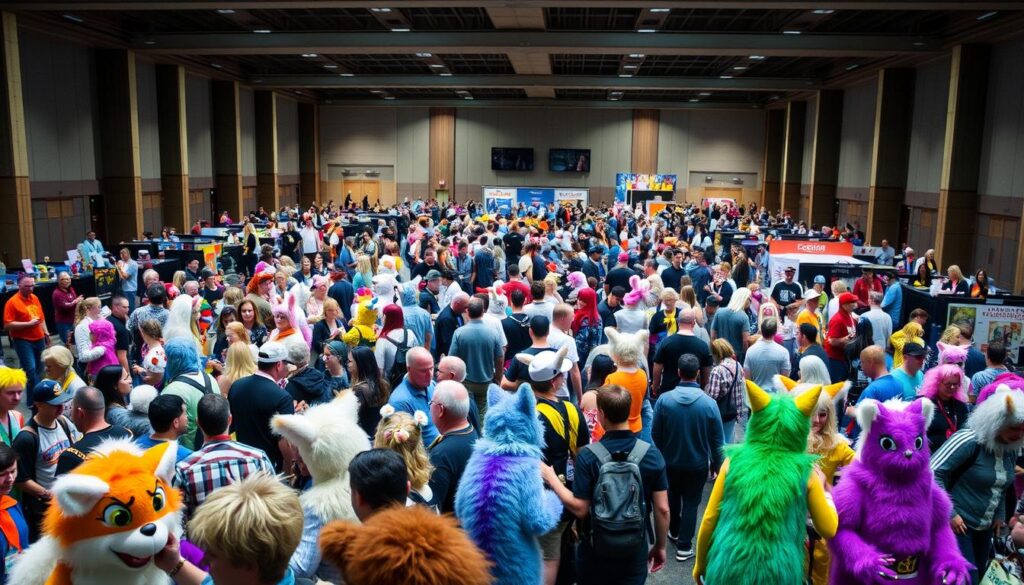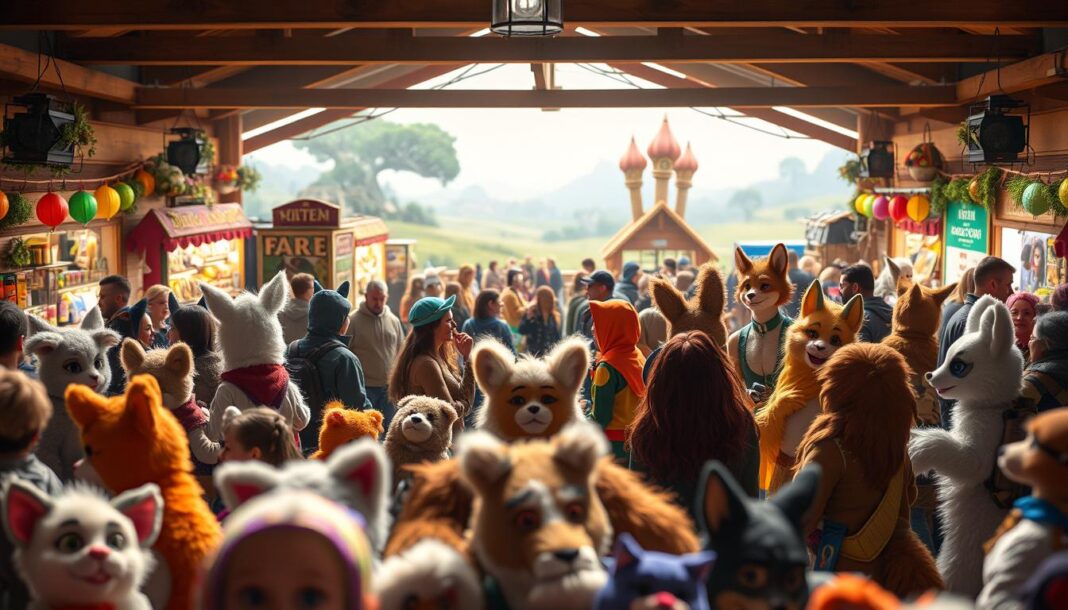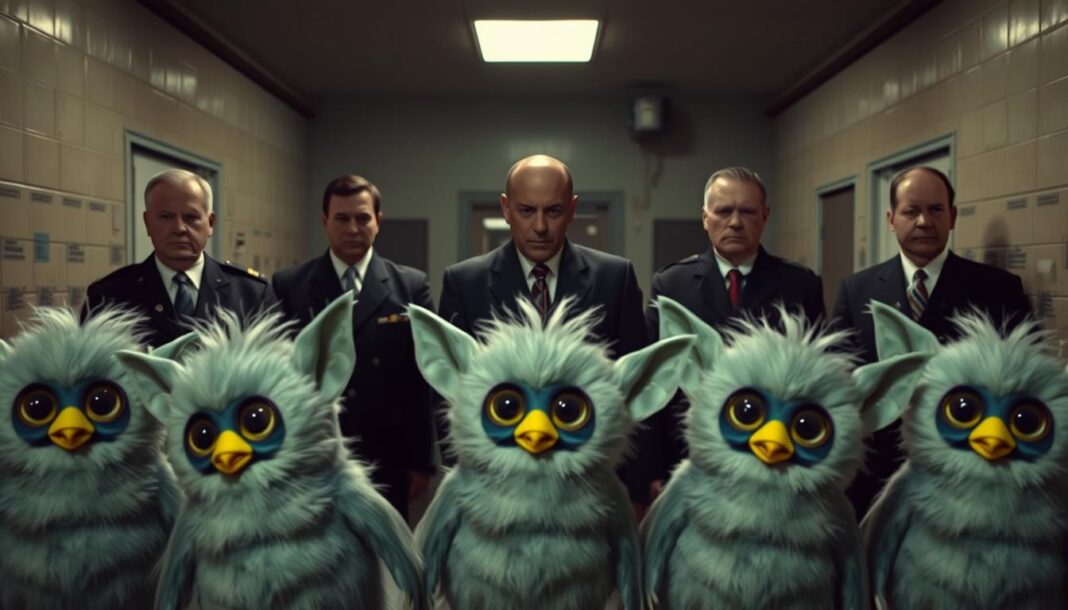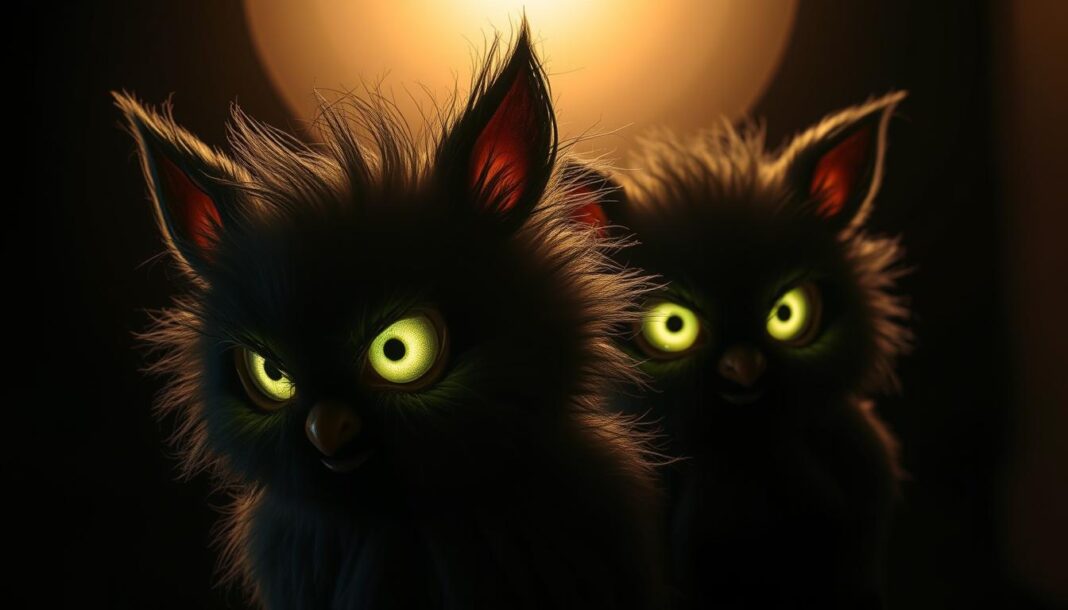The furry community has a rich history that many are curious about. It’s a fascinating journey that blends art, identity, and creativity. Let’s explore how this unique fandom came to be.
The term “furry” was first used formally in 1983, marking a significant moment in the community’s history. However, the roots go back even further. In 1976, the comic “Omaha: The Cat Dancer” featured early examples of anthropomorphic animals, laying the groundwork for what would become the furry culture.
Influences from sci-fi and anime, like “Kimba the White Lion” (1965), also played a role. These early inspirations helped shape the furry identity. By 1989, the first convention, Confurence 0, brought enthusiasts together, solidifying the fandom.
Over time, the internet helped the community grow and connect. Today, the furry culture continues to evolve, blending art, creativity, and personal expression. For more insights, check out our article on why furries are sometimes misunderstood.
The Birth of the Furry Fandom: Tracing Back to 1983
The year 1983 marked a pivotal moment for the furry fandom. It was during this time that the term “furry” began to take on a new meaning, formalizing a subculture that had been brewing for years. This watershed moment set the stage for a community built on creativity, identity, and shared interest in anthropomorphic characters.
The First Mention of “Furry”
In 1983, an academic paper introduced the concept of the furry fandom, distinguishing it from earlier “funny animal” fandoms. This distinction was crucial, as it highlighted the unique focus on anthropomorphic animals with human traits. The paper helped define the world of furries, giving it a name and a sense of identity.
Early Influences and Cultural Roots
Long before 1983, artists like Reed Waller and Kate Worley were laying the groundwork. Their 1976 comic, “Omaha: The Cat Dancer,” featured groundbreaking anthropomorphic characters. Similarly, the 1965 anime “Kimba the White Lion” introduced proto-furry designs that inspired many.
The first furry convention, Confurence 0, took place in 1989 with just 65 attendees. These intimate gatherings were the foundation of today’s global community. As the internet emerged, platforms like MUCKs and MUSHes allowed furries to connect beyond geographical limits, expanding the fandom’s reach.
| Year | Event | Significance |
|---|---|---|
| 1983 | Academic Paper | Formalized the term “furry” |
| 1989 | Confurence 0 | First furry convention |
| 1990 | alt.fan.furry Newsgroup | Early online community |
From print zines to online forums, the furry fandom has evolved into a vibrant, global community. To learn more about its cultural impact, check out our article on the history of the furry fandom.
What Does It Mean to Be a Furry?
Being a furry is about more than just costumes; it’s a way to express identity and creativity. The furry community is diverse, welcoming people from all walks of life. At its core, being a furry means connecting with anthropomorphic characters that reflect personal traits or aspirations.
Defining the Furry Identity
The furry fandom is not a monolith. It’s a spectrum, ranging from casual fans to dedicated fursuiters. According to Furscience research, 85% of furries don’t own full fursuits, showing that participation varies widely. The community also boasts significant LGBTQ+ representation, with 33% identifying as part of this group.
One common misconception is that furries are linked to zoophilia. This is entirely false. The furry culture is rooted in art, creativity, and self-expression, not harmful behaviors. It’s a space where people explore their identity through animal traits, creating personas that feel authentic.
The Role of Fursonas in the Community
A fursona is a personal avatar, often an anthropomorphic animal, that represents an individual. These personas can be deeply personal or purely artistic projects. For many, creating a fursona is therapeutic, offering a way to explore different aspects of their personality.
Edward, a furry enthusiast, shared his experience: “Commissioning my fursuit was like bringing my fursona to life. It’s not just a costume; it’s a part of who I am.” This sentiment is common in the community, where fursonas serve as extensions of the self.
Whether someone opts for a partial or full fursuit, the goal is the same: to connect with others and express individuality. The furry fandom is a place where creativity thrives, and everyone is free to define what being a furry means to them.
When Were Furries Invented? The Historical Context
Media and pop culture have played a significant role in shaping the furry fandom. From TV shows to video games, these influences have helped define the community’s identity and growth. Let’s explore how media and key events have left their mark.
The Role of Media and Pop Culture
Media has both celebrated and misrepresented the furry fandom. A notable example is the 2003 CSI episode “Fur and Loathing,” which sparked backlash for its inaccurate portrayal. Despite this, the episode brought attention to the group, sparking conversations about representation.
Another phenomenon is “furbait,” where characters like Lola Bunny and Muk from Pokémon are designed to appeal to furries. These designs often fuel creativity within the community, inspiring art and storytelling.
Key Events That Shaped the Fandom
Over the years, the furry fandom has grown exponentially. From 65 attendees at the first convention in 1989 to over 10,000 at modern events, the community has expanded globally. Technological advancements, like MUCK platforms and Discord servers, have also played a crucial role in connecting furries worldwide.
Academic recognition has further legitimized the fandom. Research by the International Anthropomorphic Research Project (IARP) has helped address stigma and educate the public. Pop culture crossovers, such as Five Nights at Freddy’s and Pokémon, continue to inspire furry art and creativity.
For more insights, check out our article on how many furries are there.
The Evolution of Furry Conventions
What started as small meetups has grown into a global phenomenon, uniting fans worldwide. These events have become a cornerstone of the community, offering a place to celebrate shared passions and creativity. From intimate gatherings to massive conventions, the journey reflects the unity and growth of the fandom.

From Small Gatherings to Global Events
The first furry convention, Confurence 0, took place in 1989 with just 65 attendees. Fast forward to today, and events like Anthrocon draw over 10,000 participants. These conventions have become a hub for fans, artists, and vendors, creating a vibrant marketplace of ideas and creativity.
Economic impact is significant. Hotels, restaurants, and local businesses benefit from the influx of attendees. Vendor markets thrive, offering everything from fursuits costing $4,000-$5,000 to handmade crafts. The growth of these events showcases the community’s dedication and passion.
The Impact of Conventions on the Community
Safety is a priority. Many conventions have protocols for minors, ensuring a welcoming environment for all ages. Cooling areas, known as “fursuit lounges,” provide relief for those in elaborate costumes. These measures highlight the community’s commitment to inclusivity and care.
Networking opportunities abound. Artists connect with fans, and friendships flourish. Charity drives, like Anthrocon’s support for animal shelters, demonstrate the fandom’s generosity. Despite challenges, such as the cancellation of Rainfurrest, the spirit of these conventions remains strong.
Programming diversity is another highlight. Panels, dances, and workshops cater to a wide range of interests. Whether you’re a casual fan or a dedicated fursuiter, there’s something for everyone. To learn more about the global furry presence, check out our article on how many furries are in the.
Art and Creativity in the Furry Fandom
Art and creativity form the backbone of the furry fandom, shaping its identity and growth. From digital illustrations to written works, the community thrives on self-expression. This section explores how art and literature have become integral parts of the furry world.
The Rise of Furry Art and Literature
The furry fandom’s artistic roots trace back to early zines and hand-drawn comics. Today, platforms like FurAffinity and Inkbunny host thousands of pieces of furry art. Artists like Blotch have gained recognition for their unique styles, blending realism with anthropomorphic designs.
Literature also plays a significant role. Furry-themed stories often explore transformation (TF) and other fandom-specific genres. These narratives allow creators to delve into complex themes while staying true to the community’s interests.
How Creativity Fuels the Community
Creativity is the lifeblood of the furry fandom. It fosters connections through shared projects and commissions. Many artists, like Xege Kheiru, have transitioned from designers to bloggers, sharing their journeys and inspiring others.
The commission economy is another vital part of the community. Artists earn income by creating custom pieces, from fursona designs to full fursuits. This system supports both creators and fans, ensuring a thriving ecosystem.
| Platform | Focus | Impact |
|---|---|---|
| FurAffinity | Art and Literature | Central hub for furry creators |
| Inkbunny | SFW and NSFW Art | Diverse artistic expressions |
| E621.net | Archive and Community | Resource for furry enthusiasts |
From games to fanfiction, the furry fandom continues to evolve. Its creative spirit ensures a vibrant future for all who are part of it. For more on unique furry experiences, check out our article on the Long Furby phenomenon.
The Role of the Internet in Expanding the Furry Fandom
From BBS to Discord, the internet has fueled the furry community’s expansion. It’s hard to imagine the fandom reaching its current scale without the connectivity of the digital age. Online platforms have become the backbone of modern subcultures, and the furry community is no exception.
Online Communities and Forums
Early furry enthusiasts relied on BBS (Bulletin Board Systems) and IRC (Internet Relay Chat) to connect. These platforms laid the groundwork for today’s vibrant online spaces. The alt.fan.furry newsgroup, launched in 1990, was one of the first dedicated forums for furries. It allowed fans to share art, stories, and ideas, fostering a sense of belonging.
Today, platforms like Discord and Telegram host thriving furry groups. These spaces offer roleplay opportunities, art sharing, and real-time conversations. However, managing large servers comes with challenges. Moderation is crucial to ensure a safe and welcoming environment for all members.
The Digital Age and Furry Culture
The internet has also revolutionized how furries express themselves. Streaming platforms like Twitch have given rise to fursuiters who entertain audiences in real-time. Viral trends on TikTok, such as #FurryTok, have introduced the world to furry culture in new and creative ways.
Artists and creators benefit from platforms like Patreon, which provide monetization opportunities. This financial support allows them to focus on their craft, enriching the community with high-quality content. For more insights into the furry fandom’s growth, check out our article on who invented furries.
Misconceptions and Stereotypes About Furries
Misunderstandings about the furry fandom often stem from limited exposure and misinformation. Many people form opinions based on stereotypes rather than facts. Let’s explore some common myths and how the community addresses these challenges.
Common Myths Debunked
One of the most pervasive misconceptions is that all furries are sexual. Research from Furscience shows that fewer than 5% of furries cite sexuality as their primary interest. The fandom is rooted in creativity, art, and self-expression, not inappropriate behavior.
Another myth links furries to zoophilia. This is entirely false. The community has strict protocols to report and address any harmful behavior. Collaboration with organizations like the NSPCC ensures a safe environment for all members.
Recent hoaxes, like the school litterbox rumor, have also fueled stigma. These claims have been thoroughly debunked, but they highlight the need for accurate information about the fandom.
How the Fandom Addresses Stigma
The furry community actively combats stigma through education and outreach. Campaigns like #FurryNotFreak promote understanding and challenge harmful stereotypes. Conventions like Anthrocon also work with media outlets to provide accurate portrayals of the fandom.
Mental health is another focus. The community collaborates with organizations to support members facing bullying or discrimination. Studies show that furries are no more likely to suffer from mood disorders than the general population.
For more insights into the furry fandom, check out our article on common misconceptions about furries.
The Furry Fandom Today: A Thriving Global Community
Today, the furry fandom stands as a vibrant global subculture, uniting millions with shared interests. With an estimated 2.8 million participants, this community continues to grow, embracing diversity and creativity.
Niche subgroups, like military furries and nurses, highlight the fandom’s inclusivity. LGBTQ+ support networks within the community foster acceptance and understanding. Corporate sponsorships, such as Bad Dragon, further validate its cultural impact.
Virtual spaces like VR Chat and pandemic-era virtual conventions have expanded connections. These adaptations ensure the furry fandom remains resilient and innovative. For more insights, check out our article on how many furries are there in the.
As we look to the future, trends like AI art controversies spark debates. Yet, the community’s spirit remains strong. Xege Kheiru, a prominent artist, sums it up: “The furry fandom is a place where creativity and belonging thrive.”


